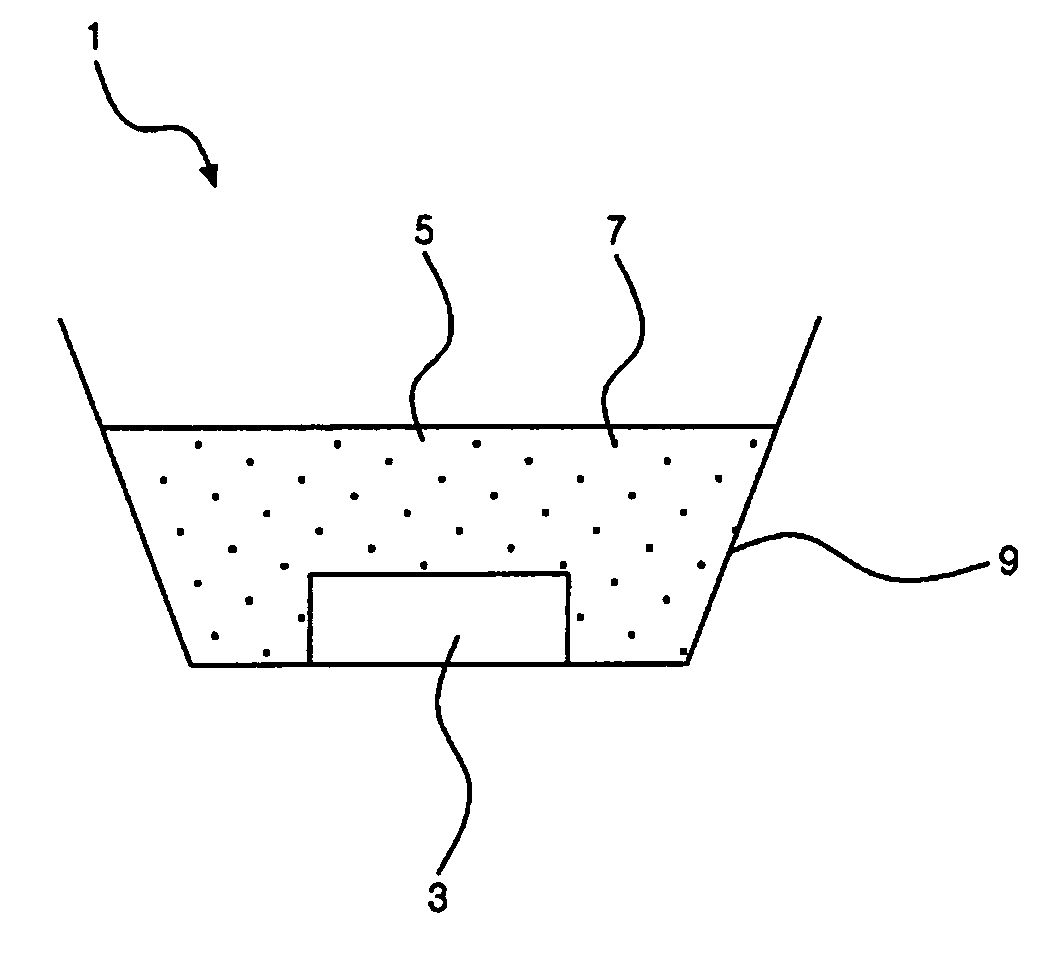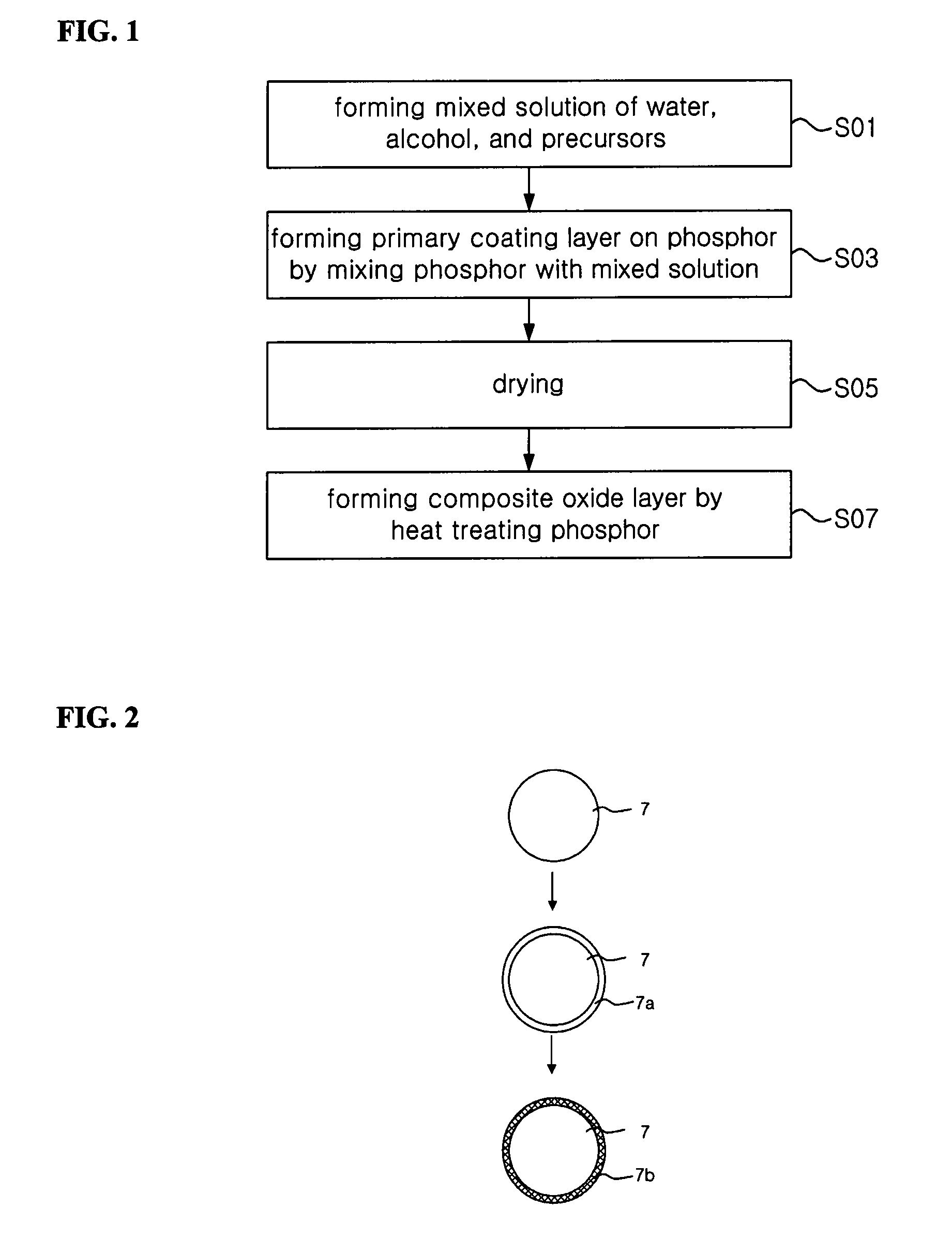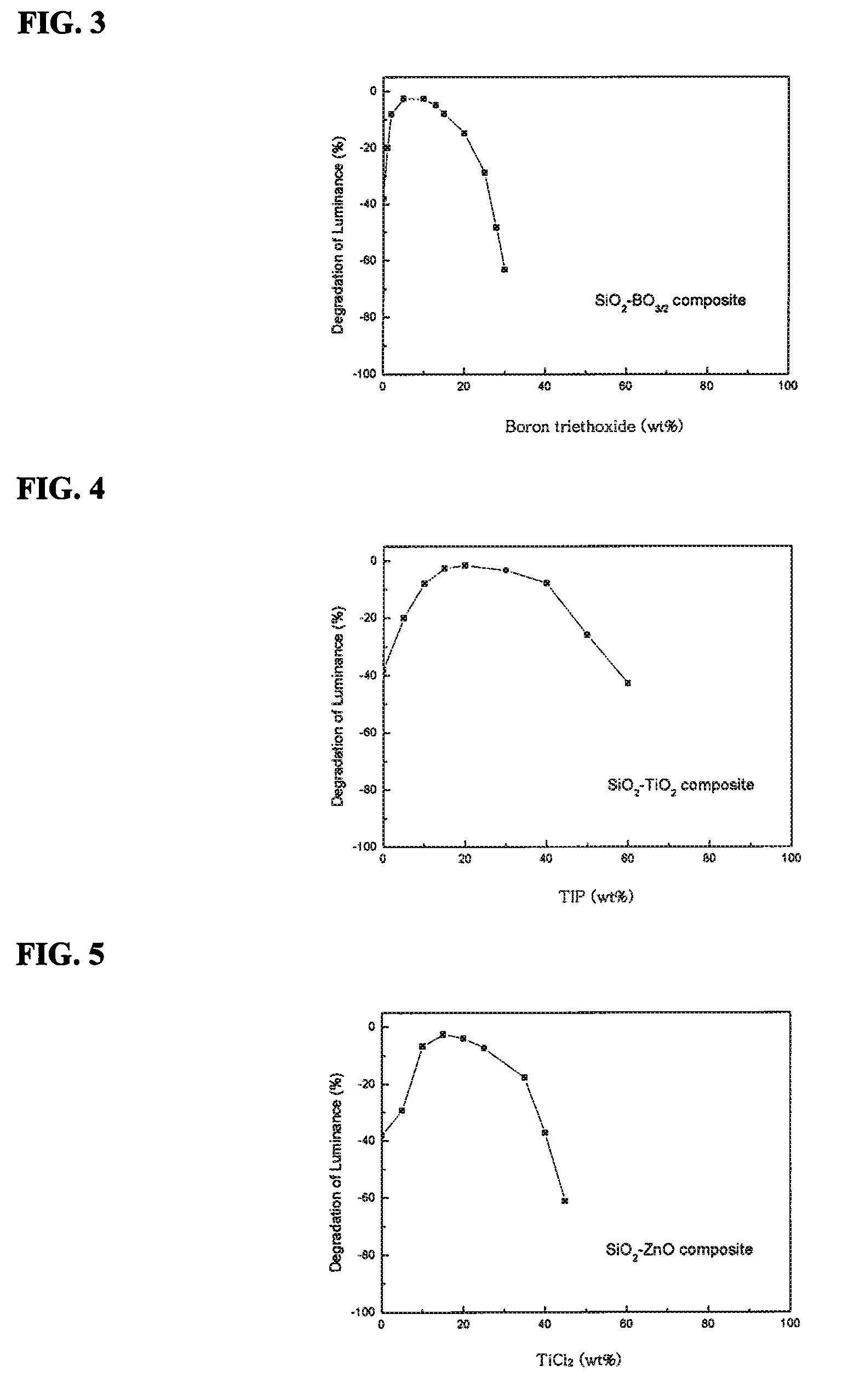Method of coating sulfide phosphor and light emitting device employing coated sulfide phosphor
a technology of thiogallate phosphor and light-emitting device, which is applied in the direction of discharge tube luminescnet screen, natural mineral layered product, coating, etc., can solve the problem of inability to achieve approximately natural color, difficulty in achieving color-rendering index, and initial optical properties of thiogallate phosphor tend to deteriorate quickly
- Summary
- Abstract
- Description
- Claims
- Application Information
AI Technical Summary
Benefits of technology
Problems solved by technology
Method used
Image
Examples
example 1
[0055]TEOS was used as a silicon oxide precursor and boron triethoxide was used as a boron oxide precursor. TEOS was diluted in a ratio of 1 wt % (with respect to the weight of phosphor) per 1 cc of anhydrous ethanol, and boron triethoxide was diluted in a ratio of 0.25 wt % (with respect to the weight of phosphor) per 1 cc of anhydrous ethanol.
[0056]A total weight ratio of the TEOS and boron triethoxide precursors was fixed to 3 wt % with respect to the weight of (Ca, Sr)S:Eu phosphor. An oxide layer was formed on the surface of 3 g of sulfide phosphor by changing a weight ratio of the boron triethoxide precursor with respect to the total weight of the precursors while maintaining other conditions. Then, moisture stability of the phosphor coated with the oxide layer was tested.
[0057]To determine a relationship between the moisture stability of the sulfide phosphor and the weight ratio of the boron triethoxide precursor, after exposing the phosphor to 100° C. steam for 10 hours, lum...
example 2
[0059]TEOS was used as a silicon oxide precursor and TIP was used as a titanium oxide precursor. Both TEOS and TIP were diluted in a ratio of 1 wt % (with respect to the weight of phosphor) per 1 cc of anhydrous ethanol.
[0060]A total weight ratio of TEOS and TIP was fixed to 3 wt % with respect to the weight of (Ca, Sr)S:Eu phosphor. An oxide layer was formed on the surface of 3 g of sulfide phosphor by changing a weight ratio of TIP with respect to the total weight of the precursors while maintaining other conditions. Then, the moisture stability of the phosphor was tested.
[0061]To determine a relationship between the moisture stability of the sulfide phosphor and the weight ratio of TIP, after exposing the phosphor to 100° C. steam for 10 hours, luminescence of the phosphor, i.e. PL, was measured and compared to PL before exposure to obtain a degradation ratio of PL, results of which are shown in FIG. 4.
[0062]As can be appreciated from FIG. 4, the phosphor having a composite oxide...
example 3
[0063]TEOS was used as a silicon oxide precursor and ZnCl2 was used as a zinc oxide precursor. TEOS was diluted in a ratio of 1 wt % (with respect to the weight of phosphor) per 1 cc of anhydrous ethanol, and ZnCl2 was diluted in a ratio of 0.25 wt % (with respect to the weight of phosphor) per 1 cc of hydrochloric solution.
[0064]A total weight ratio of TEOS and ZnCl2 was fixed to 3 wt % with respect to the weight of (Ca, Sr)S:Eu phosphor. An oxide layer was formed on the surface of 3 g of sulfide phosphor by changing a weight ratio of ZnCl2 with respect to the total weight of the precursors while maintaining other conditions. Then, the moisture stability of the phosphor was tested.
[0065]To determine a relationship between the moisture stability of the sulfide phosphor and the weight ratio of ZnCl2, after exposing the phosphor to 100° C. steam for 10 hours, luminescence of the phosphor, i.e. PL, was measured and compared to PL before exposure to obtain a degradation ratio of PL, res...
PUM
| Property | Measurement | Unit |
|---|---|---|
| temperature | aaaaa | aaaaa |
| weight | aaaaa | aaaaa |
| wavelength | aaaaa | aaaaa |
Abstract
Description
Claims
Application Information
 Login to View More
Login to View More - R&D
- Intellectual Property
- Life Sciences
- Materials
- Tech Scout
- Unparalleled Data Quality
- Higher Quality Content
- 60% Fewer Hallucinations
Browse by: Latest US Patents, China's latest patents, Technical Efficacy Thesaurus, Application Domain, Technology Topic, Popular Technical Reports.
© 2025 PatSnap. All rights reserved.Legal|Privacy policy|Modern Slavery Act Transparency Statement|Sitemap|About US| Contact US: help@patsnap.com



